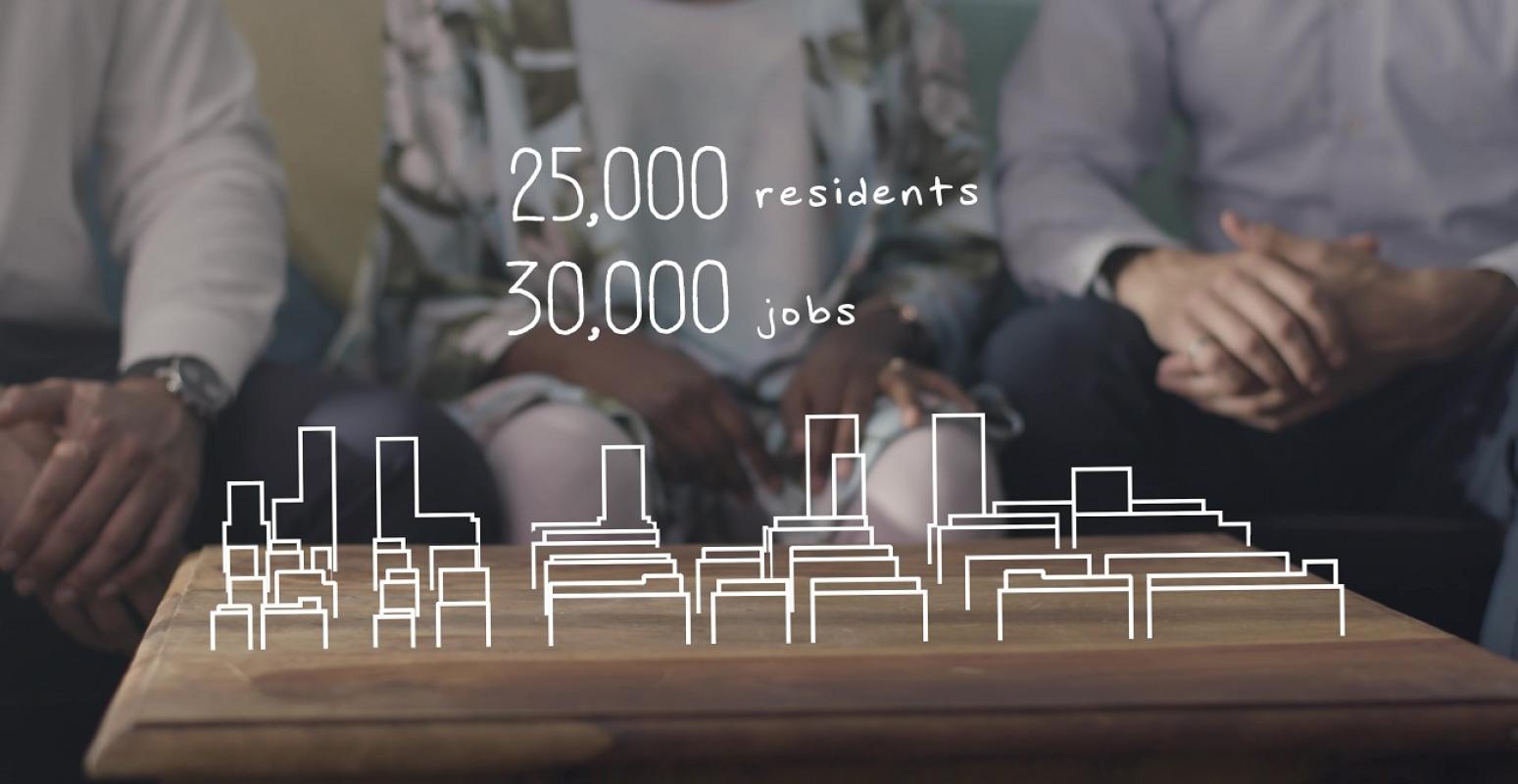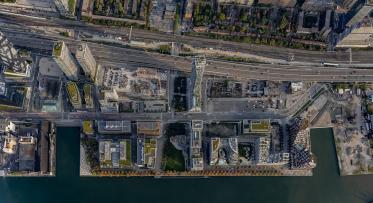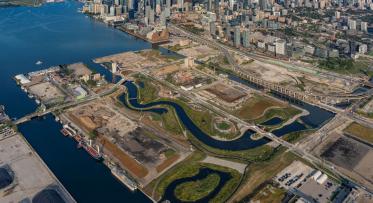Applying Our New Resilience and Innovation Framework To Villiers Island
The Port Lands will eventually be home to approximately 25,000 residents and 30,000 jobs.
POSTED: OCTOBER 29, 2019
BY: AARON BARTER
We have always been committed to building communities that protect and enhance our natural environment. In 2005, we created a Sustainability Framework to ensure our commitment to fighting climate change is embedded in everything we do. To execute on the ambitions of the framework, we created tools like our award-winning Minimum Green Building Requirement (MGBR) for all new development on the waterfront, an Environmental Management Plan, as well as Parks and Public Spaces Guidelines.
These tools have helped Waterfront Toronto and our partners implement award-winning energy conservation, waste management, water efficiency and natural heritage objectives set out in the original Framework.
Today, we continue to move forward, building on our past successes in environmental sustainability to deliver on our new Innovation and Resilience Framework, which helps us refocus on climate change, innovation and the potential benefits of technology.
Waterfront Toronto’s Resilience and Innovation Framework and Sustainability will come to life with the development of future waterfront communities like Villiers Island.
A new island right downtown
Villiers Island will be created by the new route of the Don River. It will be connected to the downtown via two new bridges over the Keating Channel – one for transit and another for pedestrians, cyclists and motorists – and a new bridge connecting Commissioners Street to the Don Roadway.
Once we complete our flood protection in 2024, this new island can be developed into a new mixed-use community – the first of several new communities in the Port Lands. Together with Urban Strategies and the City of Toronto, and in collaboration with the public and community stakeholders, Waterfront Toronto began planning Villiers Island in 2013. Over time, it will evolve from an industrial quay to a connected and complete island community with great parks and open spaces.
The plan also sets a high bar for sustainability: Villiers Island is slated to be Canada’s first Climate Positive community.
A Climate Positive Future
Villiers could be Toronto's first climate positive community.
“Climate positive” is a term that describes a district or community designed to eliminate greenhouse gas (GHG) emissions within and beyond its own borders. Typically, climate positive communities have very low energy consumption, and aim to export excess clean energy, lowering the emissions of neighbouring areas as well.
With the help of Arup and C40 Cities, we started by estimating how much greenhouse gas emissions a typical urban development and new buildings would produce.
We discovered that if our latest standards for sustainability and green buildings were applied to future communities like Villiers Island, the neighbourhood would still produce 16,541 tons of carbon dioxide emissions annually.
While that would be 23 per cent lower than the typical Toronto development, it is still 77 per cent higher than our ambitious goal of completely reducing emissions at Villiers Island, and would not qualify as Climate Positive.
A Deeper Look at Sustainability
In order to further reduce GHG emissions on Villiers Island and nearby areas, we worked with Vancouver-based environmental firm, Sustainability Solutions Group (SSG), to study the key neighbourhood design elements that affect energy, building and transportation emissions, and advance our plans for achieving climate positive.
This Villiers Island Precinct Plan Climate Positive Assessment Report Study led to six major design recommendations:
Design Buildings to Passive House Standards
The Passive House Standard is a design model that allows buildings to use up to 90 per cent less energy for heating and cooling than the average building. This is achieved by combining a variety of technologies and design features. For example, installing higher quality windows, advanced insulation to control internal temperatures and airtight construction.
Renewable energy can be harnessed by using a passive solar model to place the buildings.
Build Structures According to the Solar Access Model
Placing taller buildings on the north side of the community and shorter buildings to the south will yield the best access to the sun’s energy and reduce the need for mechanical heating in the winter.
Turn the Sun’s Energy into Electric Power
Using the sun to create electricity is one of the most cost-effective energy strategies for Villiers Island. Solar panels in the community could create enough electricity to power over 850 Ontario homes every year.
Meet Remaining Energy Demands with a District Energy System
District energy provides thermal and electric energy via a network of pipes. Under our climate positive model, district energy centres on Villiers Island will aim to be centrally located to reduce the cost of distributing and will also use renewable energy resources.
Reduce Car Travel to 25 Per Cent of Trips
By shifting most trips to transit, walking or cycling, and maximizing use of electric vehicles, transportation emissions can be reduced significantly.
Design with the Climate Goal in Mind
All stakeholders and decision-makers should consider sustainability outcomes throughout the design process. This will ensure that Villiers Island can achieve climate positive status in a sustainable, cost-effective way.
A new river valley is part of a seven-year construction project that will protect almost one third of the waterfront (or the equivalent of 140 football fields) from severe flooding during a major storm.
To learn more about Port Lands Flood Protection, visit PortLandsTO.ca.




